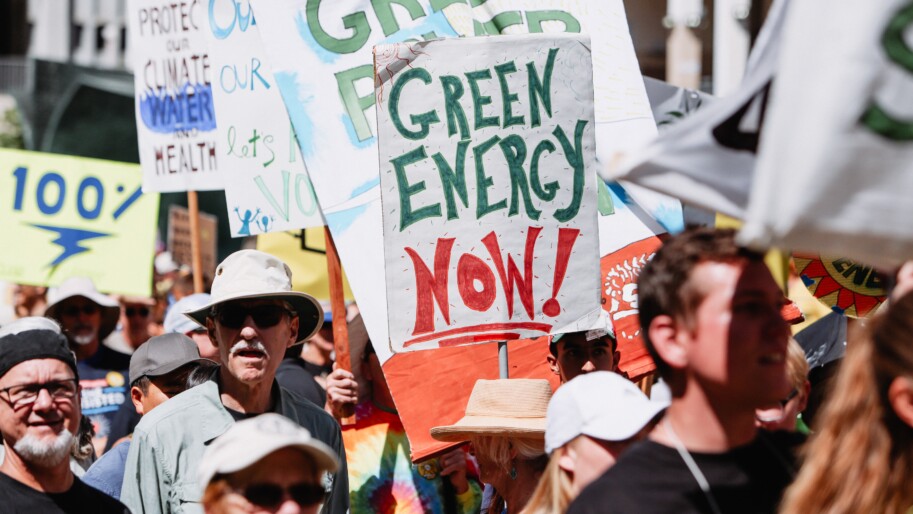On September 8, 2023, the United Nations released its first “stocktake” report on progress toward the goals of the 2015 Paris climate agreement. Those goals are to stay below 2 degrees Celsius of warming and strive to stay below 1.5 degrees Celsius of warming above pre-industrial levels.
The report states: “The first [stocktake] is taking place in an era of dramatic and widespread changes. While multiple crises cannot be ignored, neither can the opportunities for enhanced climate action. Since its adoption, the Paris Agreement has inspired near-universal climate action, but the global community is not on track to meet the long-term goals set out in the Paris Agreement, despite the collective progress made … Much more action is needed now, on all fronts and by all actors, if the long-term goals of the Paris Agreement are to be met.”
It is heartening (though quite belated) that, for the first time in 30 years of formal UN climate policymaking, the report calls for “phasing out unabated fossil fuels.” This direct language challenges the outsized influence of oil and gas interests on climate policymaking and could make it harder for them to water down any agreement that results from COP28, which will be held in Dubai in December.
Even so, fossil fuel corporations have still made a mark on this stocktake report.
The word “unabated” before “fossil fuels” was forced into the formal agreement at last year’s international meeting — COP27 in Sharm el Sheikh, Egypt — by Big Oil and petrostates such as Saudi Arabia. “Abated” refers to the use of carbon capture, utilization, and storage (CCS), a technology that has been around for decades, has repeatedly failed to achieve its emissions reduction goals, and is now being used by oil and gas interests to greenwash and continue business as usual.
That said, this report adds another tool to our climate solutions toolbox to help drive accelerated, equitable climate action at all levels of society. These bold UNFCCC recommendations parallel our 2019 Climate-Safe California policy platform for speed and scale climate solutions, following our principles of science, climate justice, and a just transition. We need to be sure decision-makers — from the local level to the federal government — understand what’s at stake if we don’t act boldly now.
Today, the world is at 1.2 degrees Celsius of warming with simultaneous extremes and deadly disasters on every continent. Some climate scientists believe this indicates we have already or will soon pass key climate tipping points.
Fortunately, we can still make a difference.
Every bit of warming we can prevent matters. As goes California, so goes the world. Working together, we can help California’s leaders do much more, more equitably, and much sooner to secure a climate-safe future for all.
Below are the 17 key findings from this first United Nations global stocktake report taken verbatim, with my highlights in bold. There are many more details to be found in the full report, so I encourage you to take a look!
Key finding 1: Since its adoption, the Paris Agreement has driven near-universal climate action by setting goals and sending signals to the world regarding the urgency of responding to the climate crisis. While action is proceeding, much more is needed now on all fronts.
Key finding 2: To strengthen the global response to the threat of climate change in the context of sustainable development and efforts to eradicate poverty, governments need to support systems transformations that mainstream climate resilience and low-greenhouse gas emissions development. Credible, accountable, and transparent actions by non-Party (country) stakeholders are needed to strengthen efforts for systems transformations.
Key finding 3: Systems transformations open up many opportunities, but rapid change can be disruptive. A focus on inclusion and equity can increase ambition in climate action and support.
Key finding 4: Global emissions are not in line with modeled global mitigation pathways consistent with the temperature goal of the Paris Agreement, and there is a rapidly narrowing window to raise ambition and implement existing commitments in order to limit warming to 1.5 degrees Celsius above pre-industrial levels.
Key finding 5: Much more ambition in action and support is needed in implementing domestic mitigation measures and setting more ambitious targets in NDCs (national determined contributions) to realize existing and emerging opportunities across contexts, in order to reduce global greenhouse gas emissions by 43 percent by 2030 and further by 60 percent by 2035 compared with 2019 levels and reach net-zero carbon dioxide emissions by 2050 globally.
- Note: By 2030, this would mean about 180 million metric tons (MMT) in greenhouse gas cuts below California’s 2019 level of 418 MMT. We aren’t anywhere near this and lack a credible annual or biannual plan to do this! Read The Climate Center’s report on how California could achieve much larger greenhouse gas reductions by 2030.
Key finding 6: Achieving net-zero carbon dioxide and greenhouse gas emissions requires systems transformations across all sectors and contexts, including scaling up renewable energy while phasing out all unabated fossil fuels, ending deforestation, reducing non-carbon dioxide emissions, and implementing both supply- and demand-side measures.
- Carbon capture, usage, and storage is an option for reducing emissions from large-scale, fossil-based energy and industry sources, but wider deployment hinges on resolving geophysical, environmental-ecological, economic, technological, sociocultural, and institutional challenges.
- The removal of fossil fuel subsidies is a key strategy for addressing structural economic barriers that can perpetuate inertia to change and prevent cost-effective, low-carbon alternatives from being adopted at scale.
- Halting and reversing deforestation and degradation and improving agricultural practices are critical to reducing emissions and conserving and enhancing carbon sinks.
- Halting and reversing deforestation by 2030 and restoring and protecting natural ecosystems will result in large-scale carbon dioxide absorption and co-benefits.
Key finding 7: Just transitions can support more robust and equitable mitigation outcomes, with tailored approaches addressing different contexts.
Key finding 8: Economic diversification is a key strategy to address the impacts of response measures, with various options that can be applied in different contexts.
Key finding 9: As climate change threatens all countries, communities, and people around the world, increased adaptation action as well as enhanced efforts to avert, minimize, and address loss and damage are urgently needed to reduce and respond to increasing impacts, particularly for those who are least prepared for change and least able to recover from disasters.
Key finding 10: Collectively, there is increasing ambition in plans and commitments for adaptation action and support, but most observed adaptation efforts are fragmented, incremental, sector-specific, and unequally distributed across regions.
Key finding 11: When adaptation is informed and driven by local contexts, populations, and priorities, both the adequacy and the effectiveness of adaptation action and support are enhanced, and this can also promote transformational adaptation.
Key finding 12: Averting, minimizing, and addressing loss and damage requires urgent action across climate and development policies to manage risks comprehensively and provide support to impacted communities.
Key finding 13: Support for adaptation and funding arrangements for averting, minimizing, and addressing loss and damage need to be rapidly scaled up from expanded and innovative sources, and financial flows need to be made consistent with climate-resilient development to meet urgent and increasing needs.
Key finding 14: Scaled-up mobilization of support for climate action in developing countries entails strategically deploying international public finance, which remains a prime enabler for action, and continuing to enhance effectiveness, including access, ownership, and impacts.
Key finding 15: Making financial flows — international and domestic, public and private — consistent with a pathway towards low greenhouse gas emissions and climate-resilient development entails creating opportunities to unlock trillions of dollars and shift investments to climate action across scales.
Key finding 16: Existing cleaner technologies need to be rapidly deployed, together with accelerated innovation, development, and transfer of new technologies, to support the needs of developing countries.
Key finding 17: Capacity-building is foundational to achieving broad-ranging and sustained climate action and requires effective country-led and needs-based cooperation to ensure capacities are enhanced and retained over time at all levels.


